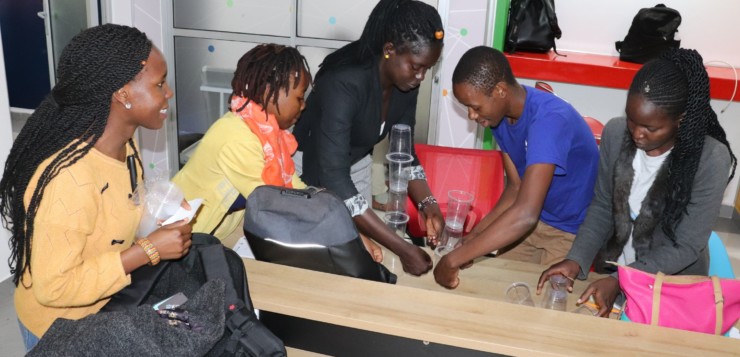“We were able to see students gaining skills already in a week”
Victor K., mentor, Kenya
Häme University of Applied Sciences (HAMK) is involved in transforming higher education towards student- centered teaching methods, such as project- and problem-based learning (PBL). This learning – and subsequently teaching – method differs tremendously from the traditional, hierarchical lecture-base teaching, that is still the most dominant method in many parts of the world. Compared to lectures, PBL requires new kinds of attitudes and skills from both the students and teachers alike.
Within HAMK’s partnership with various East and Southern African Universities, I have had the privilege to observe the changes occurring among the teachers, students and in the whole class atmosphere during the transformation from traditional methods to PBL. Here I share some insights noticed during the PBL process from one course.
In the first days of organizing PBL session, the students sat still and silent in the classroom, waiting for instructions. They did not ask questions nor provide comments or insights, and when specifically addressed, they spoke very quietly. They seemed to be almost afraid of the teachers. However, when the students were divided to work in small teams together, I could hear lively discussions. For me it looked like the students were full of ideas and questions, but they were too intimidated to express themselves in front of the teachers and the whole class.
This wasn’t that surprising, taking into account students’ adjustment with traditional teaching methods that undermine student activity. Students were not accustomed to being asked to express themselves and their ideas, rather they were used to absorbing the information presented. The rather strict and critical comments students received from their work, with the good aim of pushing students forward, also seemed to work as opposite, dis-encouraging students to explore and try their ideas.
To enhance and encourage student activity and provide them with a floor to express their ideas and views in a supporting environment, me and other mentors started little by little to create a safe learning environment. This was done using various ice breakers and social games with both students and teachers participating. We welcomed and appreciated all ideas presented and were careful not to belittle students or their opinions. In addition, we encouraged students to learn from each other through collaboration, peer-feedback and support.
The subsequent changes in students’ and teachers’ skills and attitudes were seen within weeks.
Students started to speak up and share ideas freely. They dared to ask for clarification, challenge each other and the teachers, and complement presented notions with their own. The development of students’ communication skills and self-esteem was tremendous. When students met the representatives of partnering company, they acted professionally, introduced themselves and their expertise and interviewed the staff members with adequate questions.
Teachers left the classroom front and started to sit around the students at their tables, providing support and guidance rather than giving direct facts, answers or instructions. The hard criticisms changed to constructive feedback and believing in students’ abilities to conduct the given tasks. I saw the “theatre of school” with strict teacher-student roles cracking up, with both teachers and students starting to bring out their true personalities.
At the end of the 2-week course, the whole atmosphere in the class had changed. From silent, tense space, it has become a lively and bubbling environment, filled with ideas and team spirit. Teachers rewarded and supported students with their good work with high fives, and everyone seemed to believe in themselves and enjoy their doing.
At the end of the PBL experience, after noticing the huge change, I asked teachers how they feel about the experience and their new role within it. The answer was:
“This is great, I like it!” Victor K., mentor, Kenya
Authors
Ulla-Maija Knuutti, Senior lecturer at HAMK Edu Research Unit
Satu Määttänen, Research assistant in HAMK Bio




